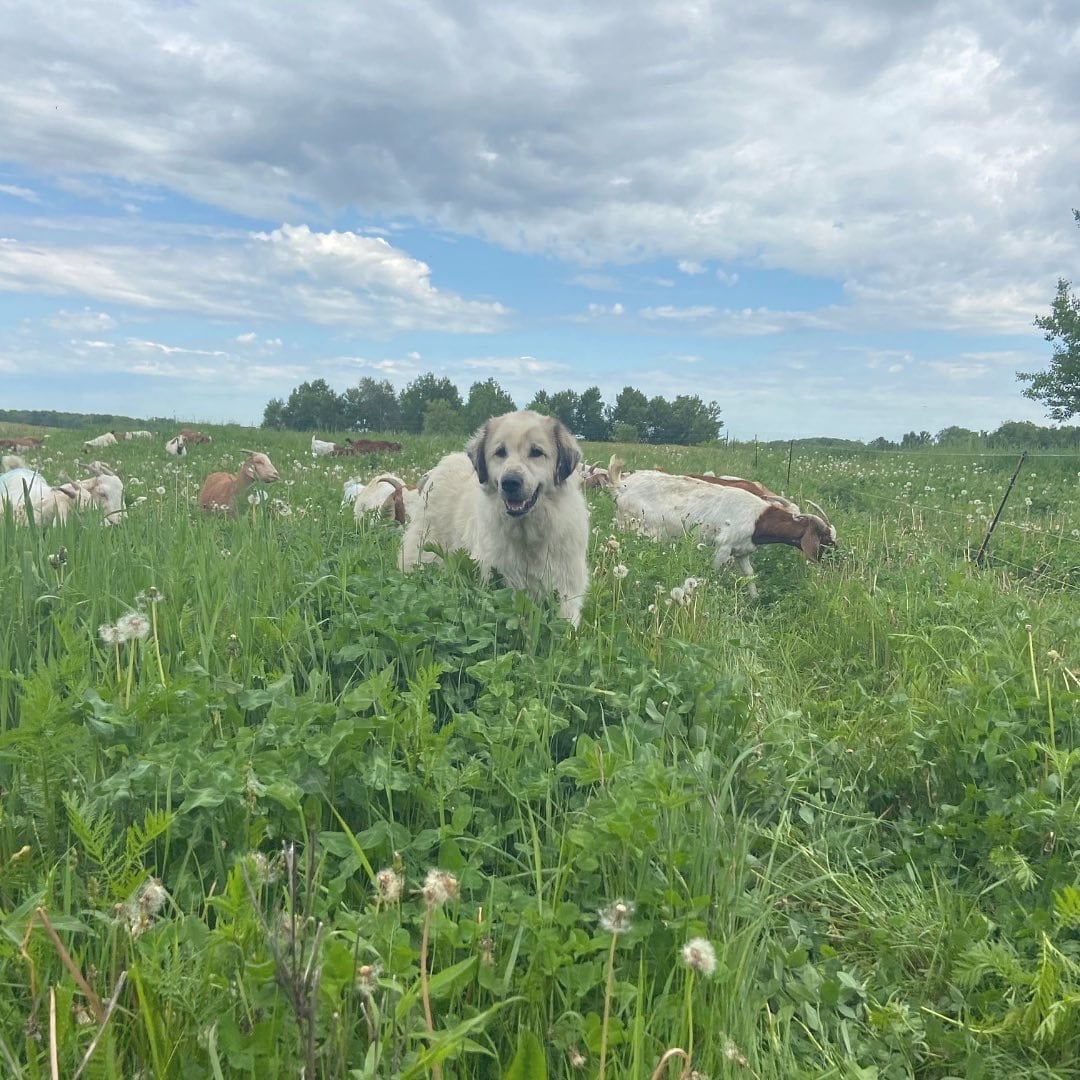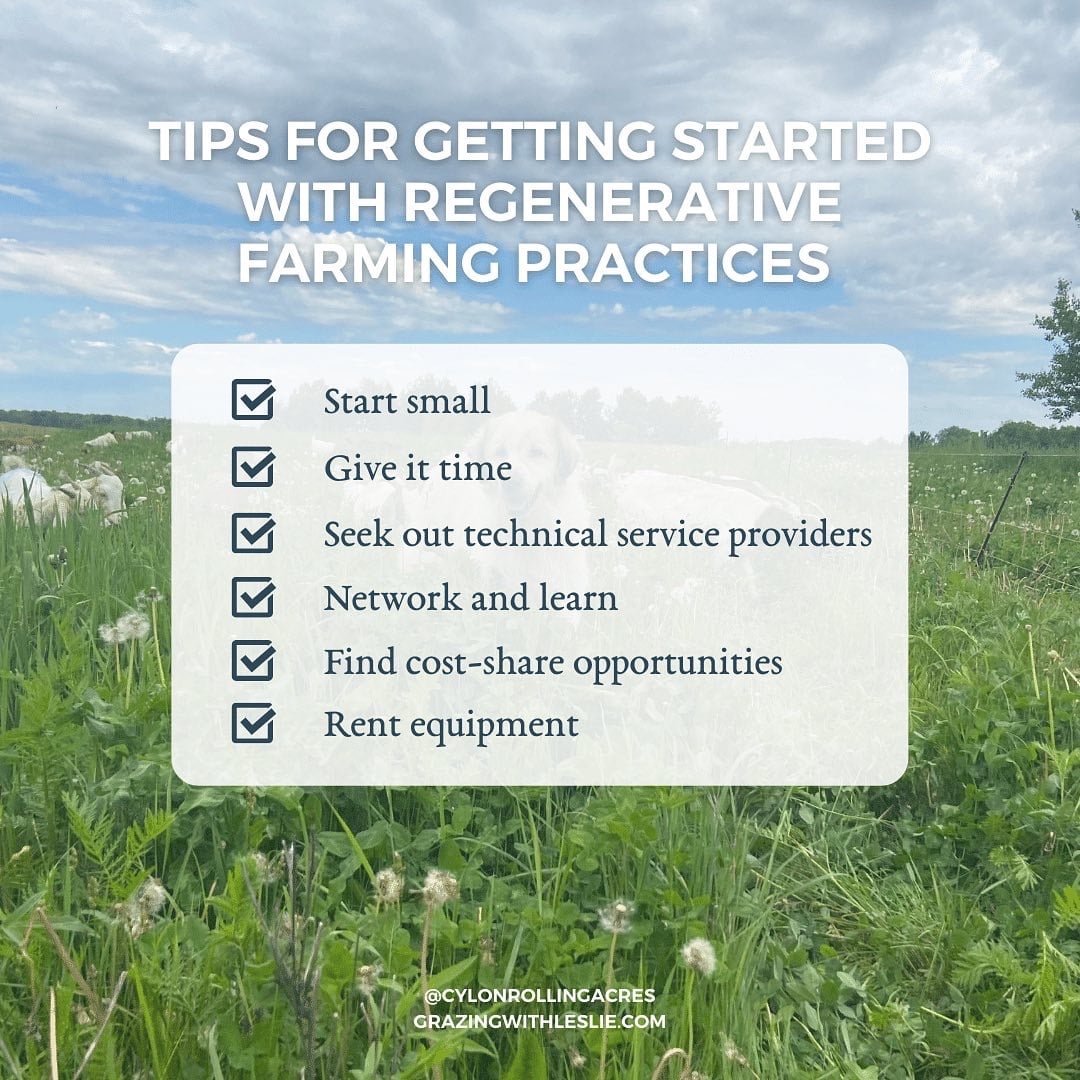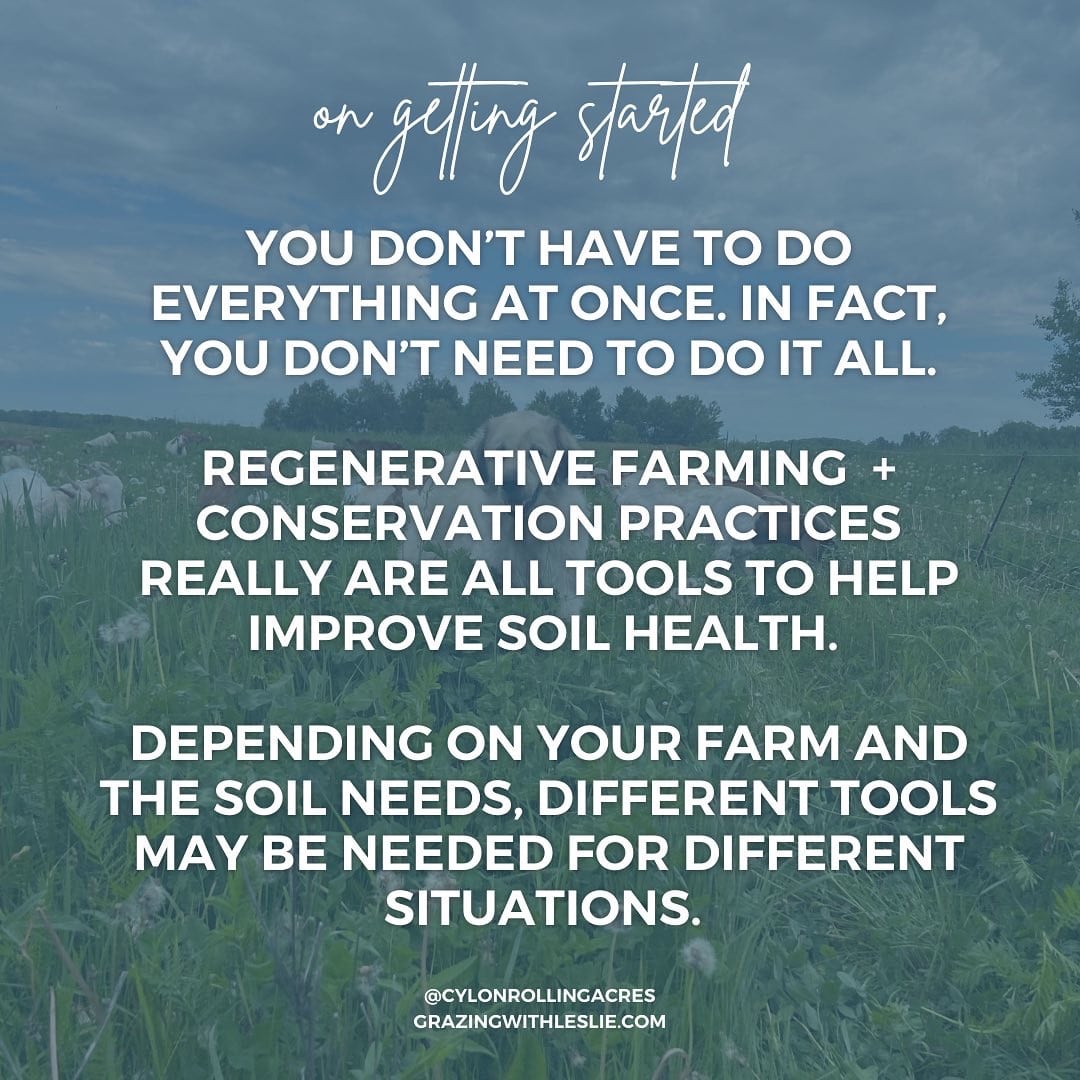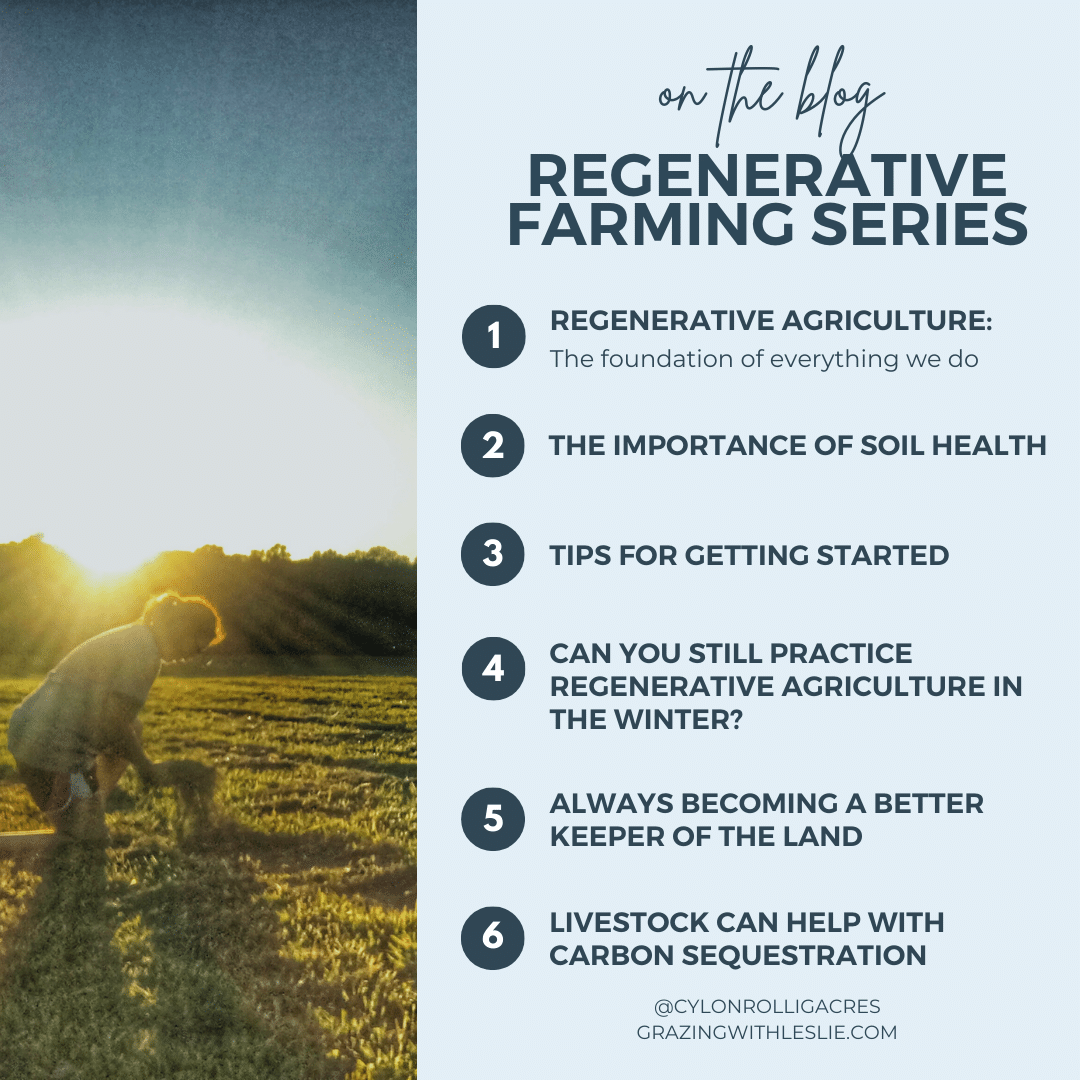
Getting started with regenerative farming or conservation practices may seem a bit daunting, especially when what you’re doing is already working or even if you’re just getting started with your farm. Where do I start? Do I need to buy a no-till drill right away? Do I have to no-till all my acres? How do I know if a certain cover crop is the right fit for my needs? How do I transition my herd to rotational grazing?

Start small
You don’t have to do everything at once. In fact, you don’t need to do it all. Regenerative farming practices really are all tools to help improve soil health. Depending on your farm and the soil needs, different tools may be needed for different situations. It also takes time and more of a financial investment to try new practices, which is another reason for growing slowly.
Give it time
Many of these practices take time to see the long-term benefits. One season isn’t always the most representative of how a practice might work. For example, as we’ve started using a no-till drill with cover crops, we’ve had to learn how the drill works in different environments (dense pasture, old crop residue, and light ground cover in the woods). Of course, we need to keep in mind we are working with a biological system, many other factors can influence how a crop turns out (rainfall, proper nutrients, etc.).
Seek out technical services providers
NRCS is a great place to start to work with county conservationists to get technical advice and instruction on how to implement new practices. As we got started grazing we worked with NRCS to develop a grazing plan, including how we’d set up our pastures, fencing, seasonal waterlines, and how we’d implement rotational grazing practices. Every county has an NRCS office with staff that you can connect with to see what practices might work best for your farm.
Other technical service options often available
- County land and conservation departments often have staff and programs, that focus on conservation-minded practices
- Cooperative Extension staff, either for your county or region, as well as state staff are great resources for the technical how-to
- Sustainable Agriculture Research and Education (SARE): Their website is a wealth of information with technical sheets and publications on different practices and on-farm research findings https://www.sare.org
Network and learn
Seek out opportunities to learn about practices and how other farmers are putting them to use with
- Local field days or pasture walks
- Conferences and meetings
- Conservation focused organizations, such as farmer-led watershed groups, grazing networks/organizations
- Talk with your agronomist or seed rep about practices and approaches. Yes, they sell a service or product, but they’re often pretty knowledgeable and also are seeing what other farmers are doing.
More resources
Cost-share opportunities with NRCS, county land and conservation departments, watershed groups, and others to help get started and try different practices
Rent equipment, such as no-till drills. In our area, we have a couple of options to rent, including from the local U.S. Fish and Wildlife station and a dealership. We ended up renting from a friend who already owns one. Check with your county land and conservation department or even local conservation organizations to see what might be available in your area.
What other tips do you have? Share them in the comments below ?


LEAVE A COMMENT
Comments